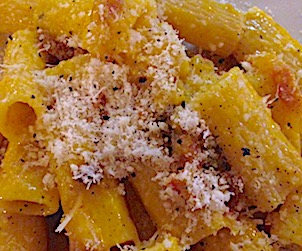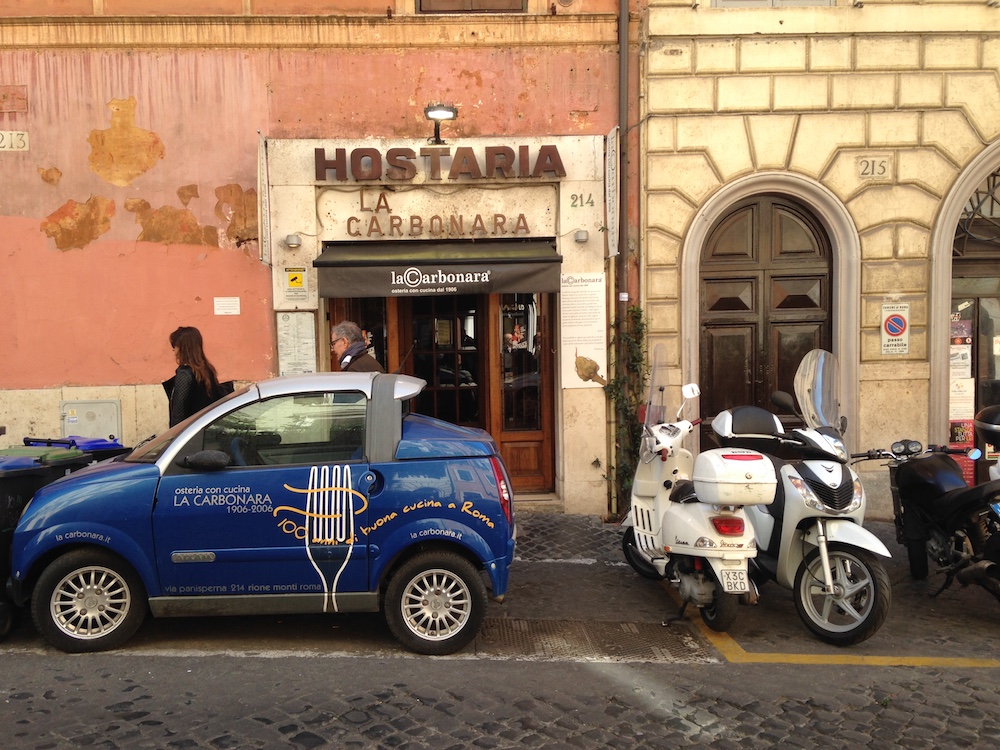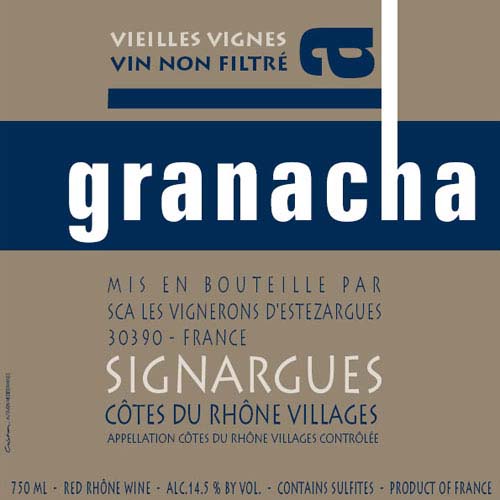Malcolm Jolley revisits the hallowed dish in Rome.
You have flown overnight from Toronto to Charles de Gaulle, where you had just under an hour to clear customs, another security check, get on an inter-terminal train and run to the gate for your connecting flight to Rome. You make it, but your bag doesn’t, so you meet with the Alitalia baggage people, who promise it’s coming on the next flight in two hours. You leave the baggage area and finally meet your driver, who’s wondering if your on the flight after all. He battles the infernal traffic of the Eternal City until at 12pm local time (which is 6am your jet lag time) you are at the front desk of your hotel near Piazza di Republica. The chic lady begind the desk tells you she’s very pleased to see you and and would be happy to stowe your carry-on back because, of course, your room won’t be ready until three o’clock. What are you going to do?
I’ll tell you what I did. I splashed some water on my face in the hotel toilet and I headed out on a ten minute walk to the nearby neighbourhood of Monti, which a recent Guardian travel article called “Rome’s secret urban village.” I was looking for bacon and eggs SPQR-style, also known as pasta alla carbonara.
Carbonara is arguably Rome’s most famous dish, and part of the city’s Triumvrate of pecorino-based pasta dishes. First, the most simple, cacia e pepe, literally just cheese and pepper boud together by its secret ingredient, starchy water from the pasta pot. Second, gricia, where guanciale (cured from the cheek, instead of the belly, of the pig) is added. And third, carbonara, which compliments the guanciale with beaten eggs, making it the perfect jet lag transition between breakfast and lunch after a trans-Atlantic flight. (The fourth pasta that evolves from cacio e pepe and gricia is, of course, l’Amitriciana which adds tomato to the cheese and pork, and sometimes (though not without contoversy) onion.
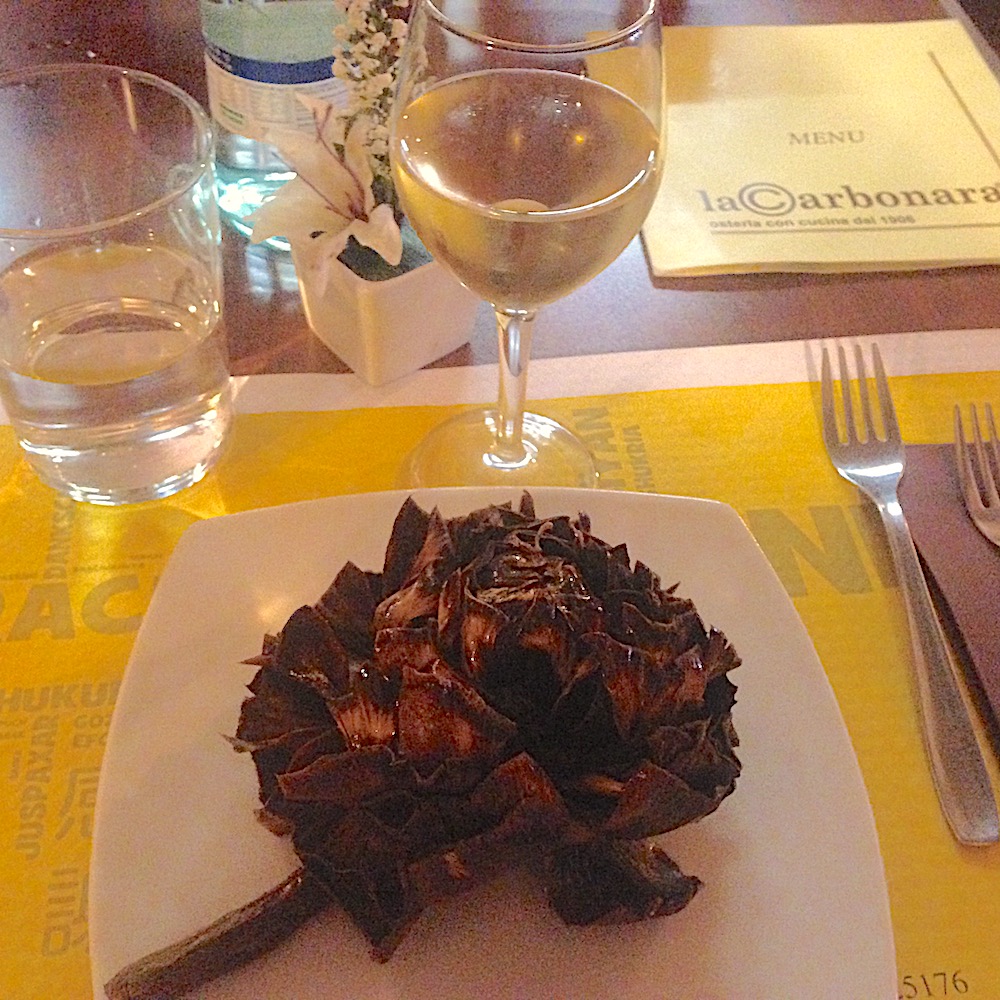
I’ve traveled to Rome enough times to have a basic understanding of the city’s central rione, its neighbourhoods, so I knew that Monti was most likely the nearest quarter where I’d find somewhere where actual Romans might eat so I might, if you will, do as they do. After a quick reconnoiter, I found myself in front of an ‘Hostaria’ called La Carbonara, whose signage also claimed its age to be 101 years. Too obvious, right? It seemed to be a Google-inspired tourist trap. And yet, and yet… into the door went two men of a certain age dressed impeccably in suits. Then a pair of ladies in shoes that would not do well on a tour of the Forum. I stuck my head in the door to find a busy osteria with walls lined with interesting looking bottles of wine, well dressed good looking people and no sign whatsoever of fanny packs or Tilley hats. I was in and ordering a glass of Frascati, a carciofo alla giudia to start and la carbonara as a main. In close quarters, my table was next to the distinguished gentlemen I had followed into the restaurant. Except for the bottle of red wine they shared, I was delighted to see throughout my lunch, we ordered the same thing. When in Rome!
Carciofi alla giudia translates as artichokes in the Jewish-style, and may be the most famous Roman dish that celebrates the make-do cuisine of the city’s Ghetto. Roman jews figured how to eat the whole globe of the pant. Deep fried in olive oil, a large carciofo is rendered from green to brown and the leaves turned to a paper thin crisp and seasoned generously with salt. You eat it all in a oily and salty crunchy reverie. Although it’s likely available all year round now, the traditional season for the vegetable in the nearby countryside is from January to April, and I saw many orders come out to expectant diners that afternoon, eager to follow the traditions of the seasons.
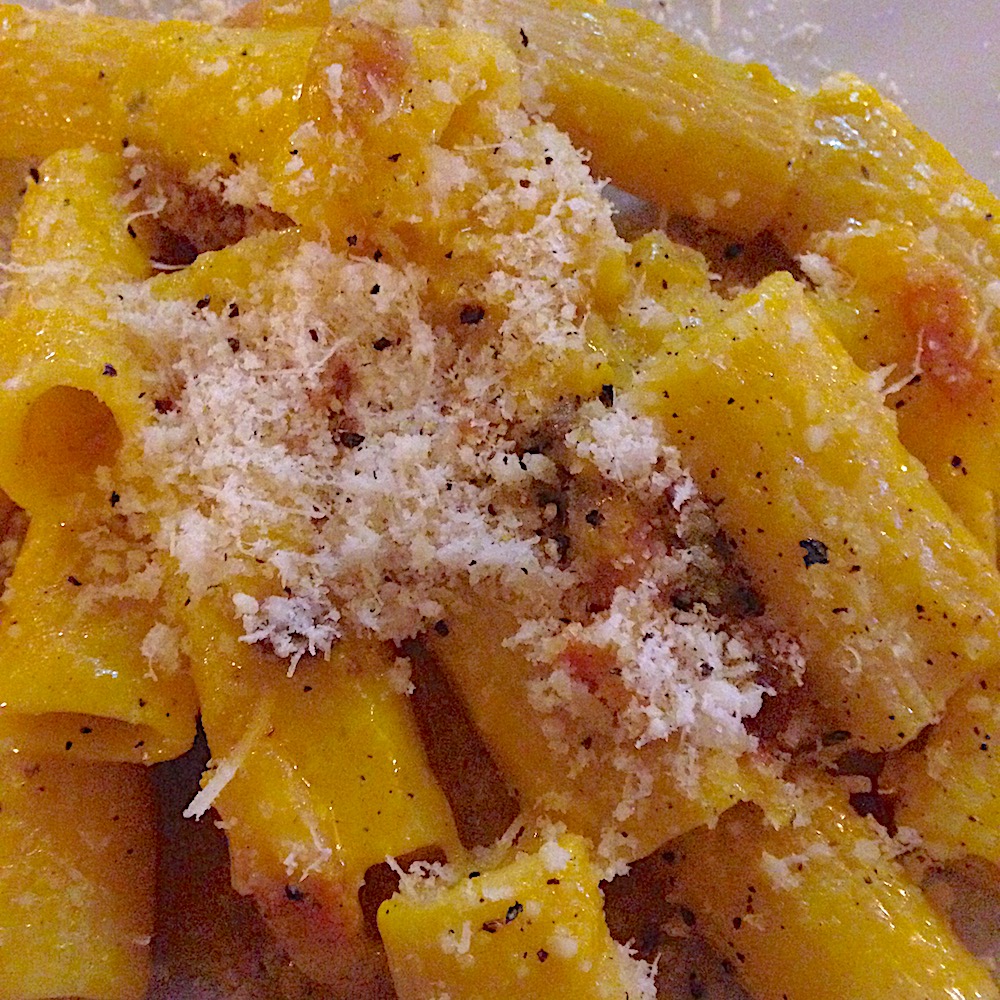
With Easter on its way, perhaps the egg-based carbonara fit into the rhythm of the season as well. English expat and cucina romana expert Rachel Roddy, author of My Roman Kitchen, writes that “Carbonara is the best example of a pasta dish in which the sauce is inseparable from the pasta.” I’m not sure if Roddy means to be metaphysical, but she surely is since the sauce really is the meaning of the dish, and it truly clings to the pasta in such an integral way that unsticking them would be impossible as it would be desirable. Evidence of the primacy of the sauce might also be drawn from the fact that the two pasta shapes to which it is traditional paired, spaghetti and large tubes of rigatoni, are so different, and yet work equally well. At La Carbonara I was given the big rigatoni. Cooked to a truly toothy al dente, the stiff warm pasta seemd to drink it’s unctuous bath of cheese, water and deep orange-yolked egg. Most velvety, springy bites were seasoned with salty chew of guanciale. After a few bites of fatty, salty, eggy goodness, I reached for a mouthfull of crisp, citrussy Frascati to wash my palate and prepare for the next rich forkful. Such a simple thing, but so good, and what a great way to begin an Italian adventure.
* * *
I was in Rome last week on my way to the Ercole Olivario competition in Perugia, which selects the year’s best Italian olive oils. Watch GFR for my coverage this week.

